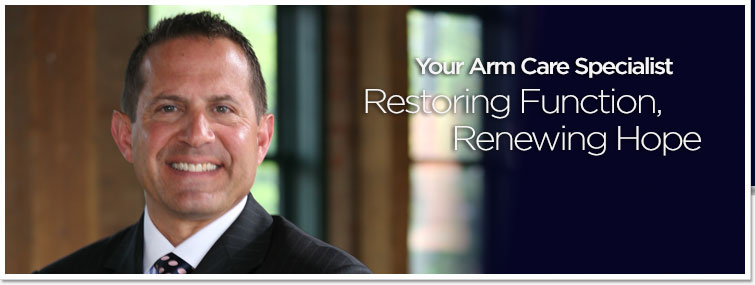NOTICE:
Our Practice has MOVED
Our new location is:
Suite 405
1815 South Clinton Ave
Rochester, NY, 14618.
The NEW phone number is 585-565-3500
Our Practice has MOVED
Our new location is:
Suite 405
1815 South Clinton Ave
Rochester, NY, 14618.
The NEW phone number is 585-565-3500

For appointments call
585.565.3500
Fax Number:
585.434.4081
585.565.3500
Fax Number:
585.434.4081

Innovation is Valuable....but
August 8th, 2008
There is no question that Innovative surgical devices and procedures have a critical role in medicine. When it comes to your shoulder, hand or elbow, though such alternatives may not be validated by outcomes studies, they may still provide better function, quicker recovery or a number of other benefits. However, we must not completely disregard the value of what has worked in the past--what is time-honored and tested.I recently edited a Supplement addressing Innovation in the Hand, Wrist and Elbow for the American Journal of Orthopaedics, in which I authored an introductory Editorial on the subject of Innovation. What follows is that contribution. Most importantly, in my opinion, we need to provide information and conscientious guidance, so that our patients can make the most ideal choice for their situation, regarding treatment.
Value-Added Innovation Should be Responsible and Relevant
Our capacity to deal with novelty is largely a function of the right side of our brain. Though traditionally described by some neuroscientists as the “inferior” hemisphere in terms of cognitive functions---because it is the left side that governs our abilities in language and basic or linear logic, it is now clear that the right hemisphere is the “exploratory” part of the brain, dedicated to discovery and learning. It has been stated that people who remain engaged in life often display an attitude of openness to new and unexpected experiences. And people who are receptive to novelty and innovation also tend to be good in a crisis, because they are open to seeing opportunity in the most challenging of situations.
As physicians, we understandably take comfort in relying on time-honored edicts and existing data. Too often, however, we may rely on information that supports only our existing instinct or point of view, and we may settle for the best available “mediocre choice”. Our desires for certainty may rule out innovative approaches, perpetuate the status quo, and slow incremental improvement in patient satisfaction and functional outcomes. The challenge is balancing the responsibility of providing “evidence-based” treatment with a desire to provide a value-added, relevant, “cutting-edge” solution.
Having an open mind--what Buddhist monks refer to as the “beginner’s mind”—reflects a willingness to step back from prior knowledge and existing conventions in order to start over and cultivate new options. In “Zen Mind, Beginner’s Mind”, Shunryu Suzuki acknowledges that “In the beginner’s mind there are many possibilities, but in the expert’s there are few.”
In this supplement, I have asked the authors –each of whom are uniquely qualified as both expert and innovator--to highlight responsible and relevant innovative treatments for thumb, wrist and elbow arthritis. I encourage you to study each article with an open mind, to follow the evidence-base as it develops, and to conscientiously include novel, value-added treatment alternatives in your armamentarium.
Replies
No replies!



